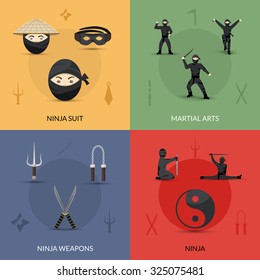Discovering The Rich Heritage And Spiritual Dimension Of Martial Arts: An Extensive Evaluation
Discovering The Rich Heritage And Spiritual Dimension Of Martial Arts: An Extensive Evaluation
Blog Article
Writer-Adkins Martin
Enter the old world where martial arts were born out of necessity in diverse areas. https://www.mccookgazette.com/story/2961102.html combating styles intertwined with historic contexts. Techniques progressed over centuries via committed practice and social exchanges. https://martial-arts-lessons-for23222.vblogetin.com/36749520/discover-the-tricks-of-martial-arts-judo-and-taekwondo-delve-into-the-old-traditions-of-these-fighting-styles-and-discover-their-one-of-a-kind-techniques , contemporary martial arts mix traditional aspects for optimal efficiency. Philosophically, martial arts stress discipline, self-improvement, and consistency. Regard, humility, and equilibrium are fundamental concepts directing practitioners towards development and resilience. Discover martial arts without sparring of this rich history and philosophy to uncover the profound impacts forming this enduring discipline.
Origins of Martial Arts
Martial arts came from various areas all over the world, evolving as useful battle systems to defend against hazards. These old battling styles were established out of requirement, with each society crafting strategies suited to their special settings and difficulties. From the grappling arts of Jujutsu in Japan to the striking strategies of Martial art in China, martial arts were deeply linked with the historical, social, and cultural textile of their respective societies.
In Japan, the samurai class refined martial arts like Kenjutsu, the art of the sword, which later on developed into the more promoted form of Kendo. On the other hand, in Brazil, Capoeira emerged as a blend of dancing and combat, produced by enslaved Africans as a method to resist injustice. Each martial art lugs with it a rich history and ideology, reflecting the worths and beliefs of the people that exercised them.
As you look into the origins of martial arts, you uncover a tapestry of human resourcefulness, resilience, and the stubborn spirit of warriors throughout time.
Evolution of Techniques
Via centuries of practice and improvement, combat strategies within various martial arts have undergone an extensive development. From ancient designs like Kung Fu and Karate to much more contemporary techniques such as Brazilian Jiu-Jitsu and Krav Maga, the development of techniques has actually been driven by a mix of social influences, functional applications, and technical innovations.
One substantial facet of this development is the cross-pollination of strategies in between various martial arts. For example, strategies from typical Japanese Jiu-Jitsu were included into the production of Judo by Jigoro Kano in the late 19th century. This blending of designs has led to the advancement of crossbreed martial arts like Mixed Martial Arts (MMA), which integrate elements of striking, grappling, and entry strategies.
Furthermore, the development of methods has been formed by the increasing focus on performance and efficiency in combat. Experts have constantly looked for to improve their methods via rigorous training, experimentation, and competitors, causing the growth of very specialized and reliable fighting designs. In general, the evolution of techniques in martial arts shows the dynamic nature of battle and the recurring pursuit for improvement and innovation.
Philosophical Foundations
Checking out the underlying philosophical concepts of martial arts offers insight right into their core worths and directing ideas. At the heart of numerous martial arts self-controls is the idea of self-control itself. By educating your mind and body to act as one cohesive unit, you grow discipline that extends past the dojo or gym right into day-to-day life. This discipline encompasses respect, humbleness, and self-discipline, forming not simply your physical abilities yet also your character.
One more fundamental thoughtful structure in martial arts is the idea of continuous self-improvement. The journey of understanding a fighting style is continuous, with experts frequently making every effort to better themselves, both physically and mentally. This focus on development promotes strength, willpower, and a growth state of mind that can be related to all elements of life.
Furthermore, martial arts emphasize the relevance of consistency and balance. Strategies are designed to utilize an opponent's power against them, highlighting the concept of producing and rerouting pressure as opposed to fulfilling it head-on. This approach encompasses social relationships, promoting tranquil resolutions and good understanding. By accepting these thoughtful structures, martial musicians not only improve their fight abilities yet likewise grow a way of life centered on personal development, respect, and consistency.
Conclusion
Finally, the history and philosophy of martial arts offer a rich tapestry of tradition, self-control, and self-improvement.
Consider example the tale of Bruce Lee, who changed martial arts by blending different designs and philosophies to create his very own one-of-a-kind type of Jeet Kune Do.
Through devotion and technology, martial musicians remain to push limits and inspire others to reach their complete capacity both in battle and in life.
